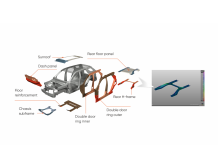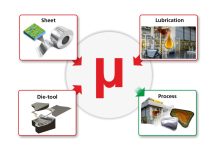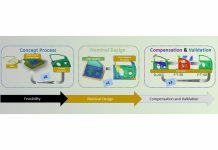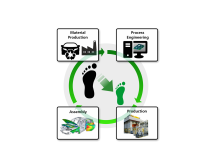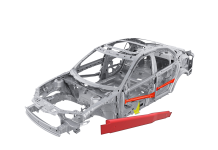Questions on Best Practices Answered in India
In this blog post Florian Mahle, Technical Process Consultant from AutoForm, shares two questions and his answers that were put to him at a recent event on springback for Advanced High Strength Steel. He shares his answers in full, for all to see here at FormingWorld.com.
Recently AutoForm’s Florian Mahle from Germany gave a seminar in New Delhi on “Challenges in Springback Compensation of High-Strength Steel-HSS and Advanced High-Strength Steel-AHSS.” This topic can never be exhausted and Florian presented the latest methods to address these challenges. The workshop was covered over a two day event with thirty six participants, coming from twenty-one companies from all over India who actively use AutoForm.
Before sharing the top two questions it must be said that during this two day workshop Florian covered the following key topics:
- Requirements for setup of base simulation to ensure a strong correlation between simulation and reality.
- Introduction to springback analysis and compensation.
- General issues and best practices to be considered for HSS/AHSS.
- Drawshell concept for accurate springback prediction.
- Ensuring robust process for successful compensation.
- Minimum clamping concept.
- Various compensation strategies.
Florian reported “The most important questions were “How to ensure a good level of springback correlation between simulation and reality” and request on “Tips and best practices for minimizing springback and for springback compensation.” These I answered in full and would like to share.”
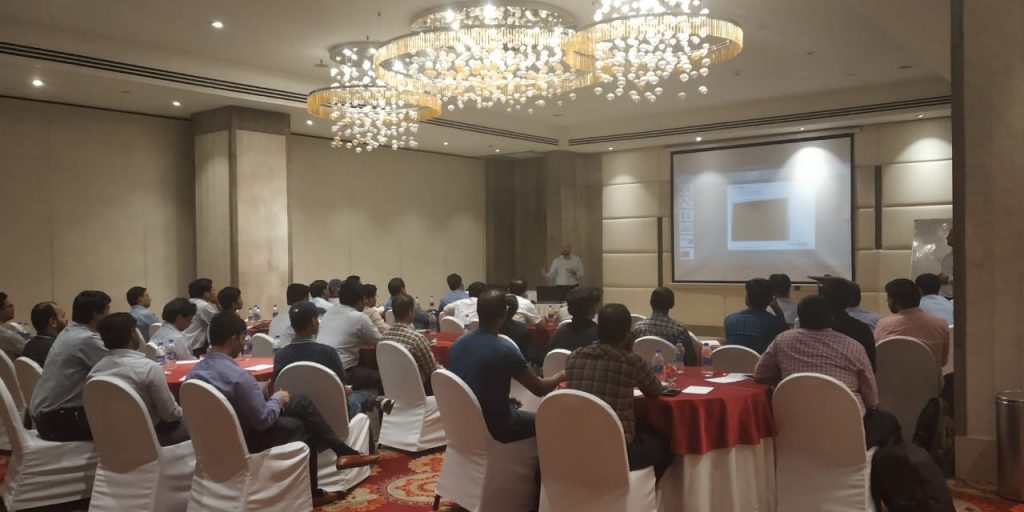
“Addressing these questions, we talked about the importance of correct and accurate set up for springback estimation. We also covered the importance of material card properties, as well as resulting requirement of tool scaling. Due to elastic and plastic material properties at force release shrinking for HSS/AHSS is bigger than for conventional steels and therefore tool scaling as counter measure is even more important.”
“Now, to ensure accuracy and a good correlation between simulations and reality for springback compensation, you need to correctly replicate the physical conditions. For AHSS materials special attention needs to be paid to the available press forces. During the engineering phase you design the process and the dies are built in a digital world. Design and simulation need to be carried out to properly reflect the very same dies and process you intend to build and operate in the physical world (simulate what can be built). This is a message we always highlight at AutoForm. On the other side, in reality, you need to replicate the same die shape, clearances, tonnages, blank, binder bearing, pad gaps, tool kinematics, measurement conditions and so on. Not even small details should be ignored.” See this blog post here for more information.
“Next, you want to ensure the reliability and accuracy of the simulated outcome. One of the most important things is that prior to reading simulation results you need to check any possible warning generated by the software and adopt related counter measures. Outcomes from “unhealthy” simulations carrying critical warnings cannot be relied upon. For instance, you may get a warning that says “Increment did not converge within the maximum number of iterations allowed”. This is one of the warnings that should be fixed. This one is most troublesome of all and may occur for different reasons, such as excessive splitting or wrinkling, bad tool geometry or improper locating of the sheet. Some users might ignore this warning and rush past them to get their “green simulation.” This hasty rush-like behavior will show up in tryout, but then it’s too late. The key is to pay serious attention to the messages “sent” by the solver and follow AutoForm’s guidance. This will benefit your real-world metal forming. The software is “telling” you that there is something wrong for some reason, you better find out what it is.” You can find out more about how to set up a healthy simulation here.
“Finally, the shop floor should, in the finish, follow the input defined in engineering as accurately as possible to achieve the result of your “green simulation.”
“At the event we also covered the importance of the drawshell concept and I gave takeaways users can apply immediately, especially regarding methods for springback minimization during engineering, such as to introduce post-stretching during drawing or forming operations. However, in my opinion one of the most valuable things of all was the sharing of experiences by those present. Of the thirty-six participants, everyone had insights from their own previous projects that they could openly share and at the end it must be said that everyone understood the importance of correlation between virtual and physical model and the requirement to reduce springback not only during engineering, but also addressing this issue quite early during part development. Therefore, by attending an AutoForm workshop you’re not only gaining experience from professional AutoForm technicians but you are able to draw upon the expertise of all of those present. That is extremely valuable indeed.”
New readers, don’t forget to sign up to our blog. We only send out updates once per month and zero marketing emails!



